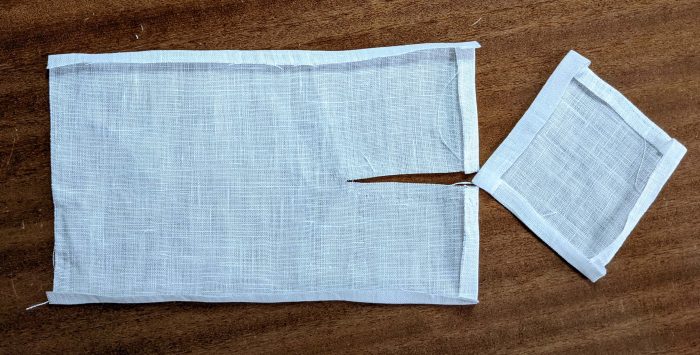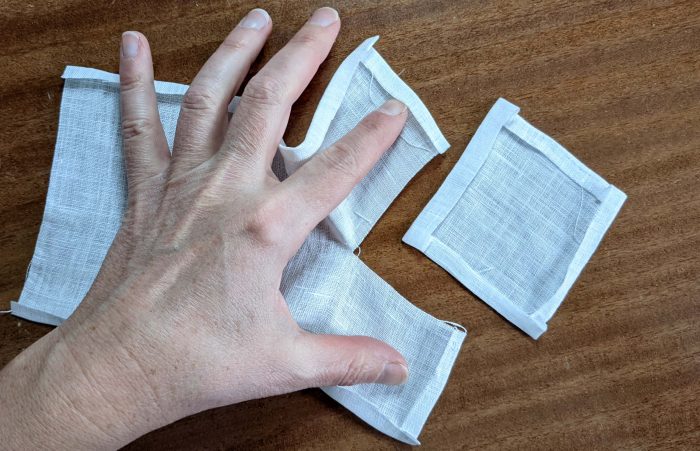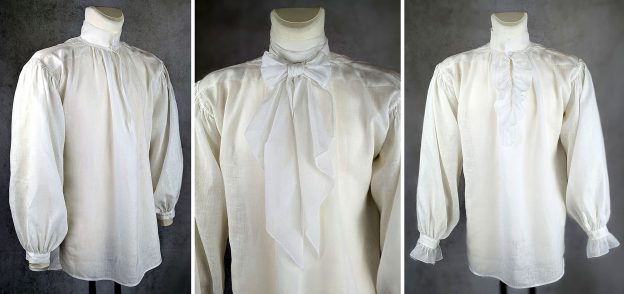I´m back in the 1790´s! No special occasion is coming up, just that I planned to finish the 1790´s men´s pattern series with a shirt which I have so far neglected.
Men´s shirts are quite simple garment´s, made from rectangular pieces of fabric and have changed less than other garments during the last centuries. Therefore, the shirt in this pattern can be used for costumes over several decades, from about 1750 to 1830.

Gussets at the underarm and shoulder slope gave the shape needed. The shoulders were reinforced with additional patches, attached to the inside of the shirt with a fell or slip stitch. There are several ways to insert gussets, attach shoulder patches or cast all the raw edges, especially at the armhole. My templates are three extant men´s shirts displayed at the “Germanisches Nationalmuseum” in Nürmberg, Germany.
Let´s start sewing, following the pattern instructions step by step.
You prefer a sewing pattern rather than a diagram? Go to my Shop and get yours!
(1) Of course, my step #1always is to cut and prepare the pieces from fabric, marking all the notches. I made the shirt from a fine linen. When sewing with linen, it´s important to pre-wash the fabric at least with the same temperature as you´re going to wash the shirt later. Cutting linen in the straight grain can be tricky as well, I prefer to pull out single threads. This can be boring and time consuming, but in the end it´s worth it.
(2) This is the shirt bodice, slashed horizontally for the neck opening, and slashed down the center front at the chest. Along slash at the center front, a narrow seam allowance is double-turned in and fell stitched in place. To hold the edge of the fabric straight when sewing, I used a plastic clamp from the hardware store (my third hand).
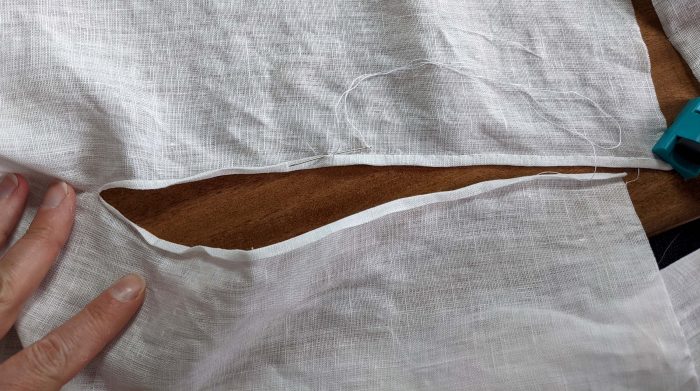
(3) When I first started sewing a 18th century men’s shirt, the most difficult thing I found was the shoulder patches and gussets. Because of this, I’m going to show it in great detail.
Take the shoulder gussets and turn in the seam allowances along two consecutive edges, or along all edges as shown in the pictures.
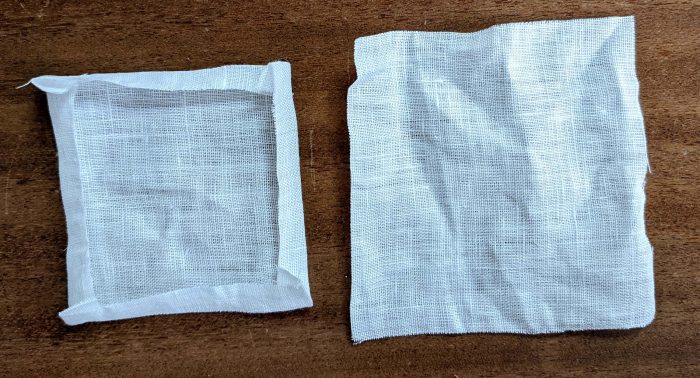
Slash the shoulder patch and turn in the seam allowances (except along the armhole edge) and insert the gusset as shown. It is shown and described a little differently in the instructions, only at the end the result will be the same.
